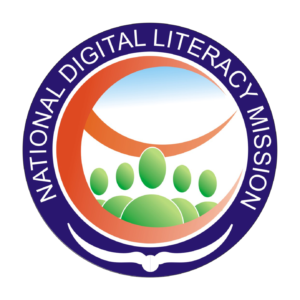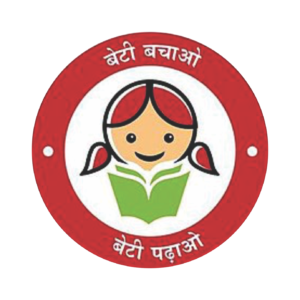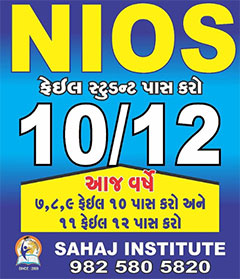Curriculum Mass Communication Senior Secondary NIOS
| Answer | Value | Marks | ||
| points | ||||
| 1. | Orally | 1×1 | 1 | |
| 2. | i) | to inform | 1×1 | 1 |
| ii) | to educate | |||
| iii) | to entertain | (Anyone) | ||
| 3. | bi-directional microphone | 1×1 | 1 | |
4. i) written communication gives words and thoughts permanence.
ii) knowledge and information became available to people who could read.
iii) has led to the spread of ideas.
| iv) fastened the social and political process. | (Any two) | 1 x2 |
2 |
5. i) to check the copy for mistakes
ii) to make value additions in the report
iii) to find a suitable heading for the story
iv) to include photographs, graphs etc. in the report
v) to condense the report by rewriting or editing the stories
vi) to give suggestions to the newseditor on bylines to be given to
| reporters | (Any two) | 1×2 |
2 |
6. i) programme wing
| ii) engineering wing | 1×2 |
2 |
7. i) Fiction programmes depend on imagination and dramatization. Example: Serials
ii) Non fiction programmes generally provide information or educates.
| Example: News bulletins, Game/Quiz show, Talks and Discussion | ||
| Programmes | 1×2 |
2 |
8. i) A jingle is a rhyming song used to advertise a product.
ii) A spot is an advertisement on audiovisual mediums such as radio,
| television, cinema or cable television. | 1×2 |
2 |
9. i) book railway tickets online through the website of Indian Railways
ii) book air tickets online through the websites of airlines
iii) visit online shopping centres and buy products online
iv) access information on educational courses through websites of
| schools, colleges | (any two) | 1×2 |
2 |
Value Marks points
10. i) to communicate with our friends and family members.
ii) during meetings and conferences
iii) across sales counters to sell products
iv) for interviews
| 11. | 1×4 |
4 |
|||
| Print Media | Electronic Media | ||||
| 1. | Literacy is a basic | 1. | Even an illiterate person can | ||
| requirement for the print | watch a news bulletin and grasp | ||||
| media. Only a literate I | is contents though the written | ||||
| person can read it. | matter on the screen cannot | ||||
| be read. | |||||
| 2. | Print Media works | 2. | There is no deadline for the | ||
| according to a deadline. | electronic media. News can be | ||||
| Usually a morning paper | updated anytime. | ||||
| carries news received | |||||
| upto the midnight of | |||||
| the previous day. | |||||
| 3. | The impact of the printmedia | 3. | Electronic media’s impact is | ||
| is more. Readers have | Instantaneous. Viewers cannot | ||||
| the choice to go back and | go back and reckeck. | ||||
| recheck. | |||||
| 4. | Print media has more scope | 4. Less scope for such long indepth | |||
| for indepth analysis of events. | analysis. | ||||
| 5. | Print media does not provide | 5. | Live discussions are possible. | ||
| scope for a live discussion. | |||||
| 6. | Language is more literary and | 6. | Language used is spoken and | ||
| flowery and reader – friendly. | more viewer -friendly. | ||||
| 7. | Frequent update of news is | 7. | Even minute-to-minute update is | ||
| not possible. | possible | ||||
| (any four) | 1×4 |
4 |
|||
12. Community radio
i) caters to the interests of a limited area or a homogenous community
ii) broadcasts programmes which are popular/relevant to the local community
iii) broadcasts programmes in the languagel dialect of the local community
| iv) | focuses on development issues | 1×4 |
4 |
| 13. i) | one chance medium | ||
| ii) | lacks visual images |
Value Marks points |
iii) messages on radio are easily forgotten
iv) not useful for those with hearing disabilities
v) listeners’ interest depends on how information or messages are
| presented. | (any four) | 1×4 |
4 |
14. i) in charge of directing actors.
ii) in charge of technical operations.
iii) responsible for transforming script into effective audio and video messages.
iv) control camera placement.
v) decide the positions of actors.
| vi) contros the decision about the type of shots. (any four) | 1×4 |
4 |
15. i) organising special events
ii) exhibitions
iii) window displays
iv) media events such as press conferences
v) distributing printed material such as pamphlets and brochures.
| (any four) | 1×4 |
4 |
16. The most standard new media product is a website. Niche websites are ones that contain very specialized content like travel, health etc.
17. i) Students can easily send and receive emails by using new media.
ii) They can access any information on any topic required for their projects or assignments.
iii) They can start their own blogs or online diaries.
iv) They can work/get employment in various departments and other
| creative fields related to new media and web. | lx4 |
4 |
18. i) Timeliness: News is something new. So timeliness is a great factor in deciding news.
ii) Impact: The Impact of an event decides its newsworthiness. When the tsunami waves struck several parts of the world, thousands of people were affected It became major news for the whole world But if a cyclone kills 20 people in Bangladesh, it may not have any impact on other parts of the world.
iii) Proximity: ” Bird flu spreading and hundreds of chicken dying in England “. Does it make news for you? You may read it but do not worry about it. But bird flu spreading in West Bengal will make you alert. This is because it is in your proximity. So proximity decides the news.
Value Marks points
iv) Controversy: – People like controversies. Anything that is connected with conflicts, arguments, charges and countercharges, fights and tension becomes news. All of you might have heard of Kargil. It was a conflict between India and Pakistan. It became great news all over the world.
v) Prominence: If a prominent person is involved in any event, it becomes news. If an ordinary person’s car breaks down and he has to wait for ten minutes on the roadside till the vehicle is repaired it makes no news. But if the Prime Minister’s car breaks down and his motorcade has to stop for five minutes it becomes news.
vi) Currency: News is about current events. Suppose the Olympic Games are held in India, I It becomes news because everybody is interested in it. Similarly, if extreme cold weather continues for a week and fog disrupts air, rail and road traffic, it becomes news.
vii) Oddity: Unusual things makes news. Extraordinary and unexpected events generate public interest. A man pulls a car by his hair, a woman gives birth to triplets, a singer enters the Guinness Book by singing non-stop for 48 hours. All such odd stories evoke much public interest.
viii) Emotion: Stories of human interest make good news items. For ego the police rescue a school boy kidnapped by mischief makers after a search of two weeks. The parents meet the boy in an emotionally surcharged atmosphere The story of this meeting with a photograph makes a good human interest report.
ix) Usefulness: Sometimes news items help the public in various ways. For example, weather forecasters warn fishermen not to go to the sea for fishing on certain days because of rough weather. Newspapers gives the phone numbers of police stations, hospitals, ambulance services etc. to help people.
x) Educational value: News has also an educational value. In almost all newspapers, there are columns about educational and job opportunities. These guide you about different educational courses, career options available, opportunities for higher studies etc. These news items help you become more knowledgeable.
| (any six) | 1×6 |
6 |
19. i) Television is an audio visual medium. It includes both visuals and sound.
ii) Television is a domestic or intimate medium. One can watch television at home with family.
iii) Television is a live medium. It can transmit visuals and information almost instantly.
iv) Television is a mass medium. It has a wide output and reach and can be understood by even illiterate people.
Value Marks points
v) Television is a transitory medium. For example a newspaper article can be read at any time of the day while that is not the case with a television programme which has a specific timing.
vi) Television is an expensive medium. It requires complex technology and
| organization which is expensive. | 1×6 |
6 |
20. i) Huge boards display messages on various products. This is called a hoarding and many of these which are electronically operated are called electronic hoardings. They are attractive and catch the attention of the viewers.
ii) Messages can also be written on bus panels and huge boards at bus terminals, airports and railway stations where a lot of people come together.
iii) Huge balloons suspened in the air carry messages written on them. These are hot air balloons which can easily capture the attention
| of the public. | 2×3 |
6 |
|
OPTIONAL MODULE VII-A |
||||
|
Traditional Media |
||||
|
21. |
(a) | electronic media |
1 |
|
|
22. |
(i) | Glove puppet. | ||
| (ii) | String puppet | |||
| (iii) | Rod puppet | |||
| (iv) | Shadow puppet | 1/2×4 |
2 |
23. (i) can be used to spread awareness on issues like AIDS, Polio immunization etc.
(ii) can be used by masses for expressing social, ritual, moral and emotional needs.
(iii) Communication through traditional media can help us in building good relations.
| Example: Decorating houses, exchanging sweets and greeting each | |||
| other during festivals. | (Any two) | 1×2 |
2 |
24. (i) Audience and performers are on the same level. This emphasizes that performers are not different from the audience. This can build a rapport between the audience and the performers.
(ii) Close eye contact with the audience will keep the audience busy with the action of the play.
Value Marks points
7 (iii) The actor is under the eagle eye of the audience who surround him/her on all sides.
So, both the performer and audience have a sense of belonging and responsibility to each other.
(iv) Audience can be invited to join the chorus for singing for more involvement.
(v) Mobile nature of the theatre helps it to reach people who normally do not go to the theatre.
(vi) The absence of proper stage, lights, costumes and make up material
| makes it a very flexible form. | (Any four) | 1×4 |
4 |
25. (i) Television is technological in nature. Traditional media is non technological.
(ii) Traditional media is flexible in nature. It is difficult for television to be flexible.
(iii) Traditional media is culturally rigid. Television on the other hand enjoys cultural freedom.
(iv) Unlike traditional media, television is an expensive medium.
(v) In traditional media, messages are presented before a live audience. In television, messages are transmitted for broadcast
(vi) The reach of traditional media is limited. Television on the other hand can reach out to a much bigger audience.
(vii) Feedback is delayed in television whereas in traditional media, the feedback is immediate.
| (viii)Television is less intimate than traditional media. | ||
| (ix) Television programmes can be easily archived. There is only limited | ||
| scope for archiving traditional media performances. (Any four) | 1×4 |
4 |
|
OPTIONAL MODULE VII-B |
|||
|
Photojournalism |
|||
|
21. |
Film camera | ||
|
22. |
Joseph Niepce ; 1827 | 1×1 |
1 |
|
23. |
i) flash | 1×2 |
2 |
| ii) tripod or camera stand | 1×2 |
2 |
Value Marks points
24. i) War photojournalism: Covering of war scenes for the media comes under this category.
ii) Glamour photojournalism: Photographing people and events around famous personalities like film stars and other rich and famous comes under this category.
iii) Spot news photojournalism: means events that make day to day news like a scene of an accident or a public function.
iv) Sports photojournalism: This is the coverage of sports events for the
| media. | 1×4 |
4 |
25. i) View tinder: This is the point from where we look and aim the camera in the duration of the scene which is to be photographed
ii) Shutter release: This is the button which we press to expose the frame.
iii) Lens: This is the device through which we focus the picture on the surface that is going to record it. It is made of glass and therefore it helps bend the light to create a sharp image.
iv) Aperture: This is located within the lens and controls the entry of light.
v) Focussing Ring: This adjustment helps to bring the subject of the photograph in sharp focus.
vi) Light Meter: This device helps the photographer determine the
| aperture and shutter setting while linking a photograph. It reads the | ||
| amount of light falling on the subject and tells reading accordingly Easy | ||
| to use cameras. Set this reading automatically. | 1×6 |
6 |
For any help related to admission in NIOS please contact Sahaj Institute on our Mobile No. 9825805820, 8200311128.



